Product Description
This exceptional chair takes its basic form from the designs of Thomas Hope, specifically plate 11 of Hope’s Household Furniture. Although Hope’s work is now synonymous with fine design in this period, it is important to remember that the general taste of the period was very different from the highly refined styles promoted in Hope’s publications.
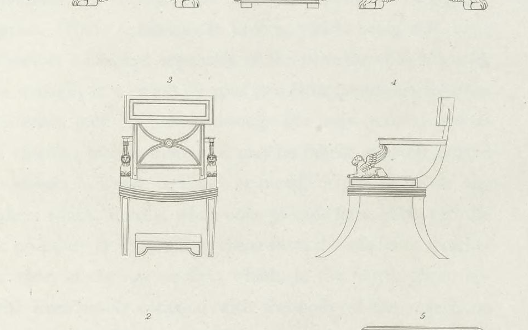
The fine proportions of our chair reflect Hope’s vision perfectly-the splayed legs and the large, rounded klismos back are both present in our piece. However the designer of our chair has chosen a very different sort of approach to the arms joining the rails and has also chosen to leave out the x-shaped splat from Hope’s design. Additionally, our piece has a gloriously carved panel which has been produced in very high relief and yet carried out very sensitively. It is a true tour de force of the carver’s art.
The carved panel is of great importance in attributing this chair to a particular maker. The Metropolitan Museum has an important set of hall chairs and armchairs made en suite in its collection (accession number 67.63.1 and 2) and these chairs employ exceptionally similar carved panels.
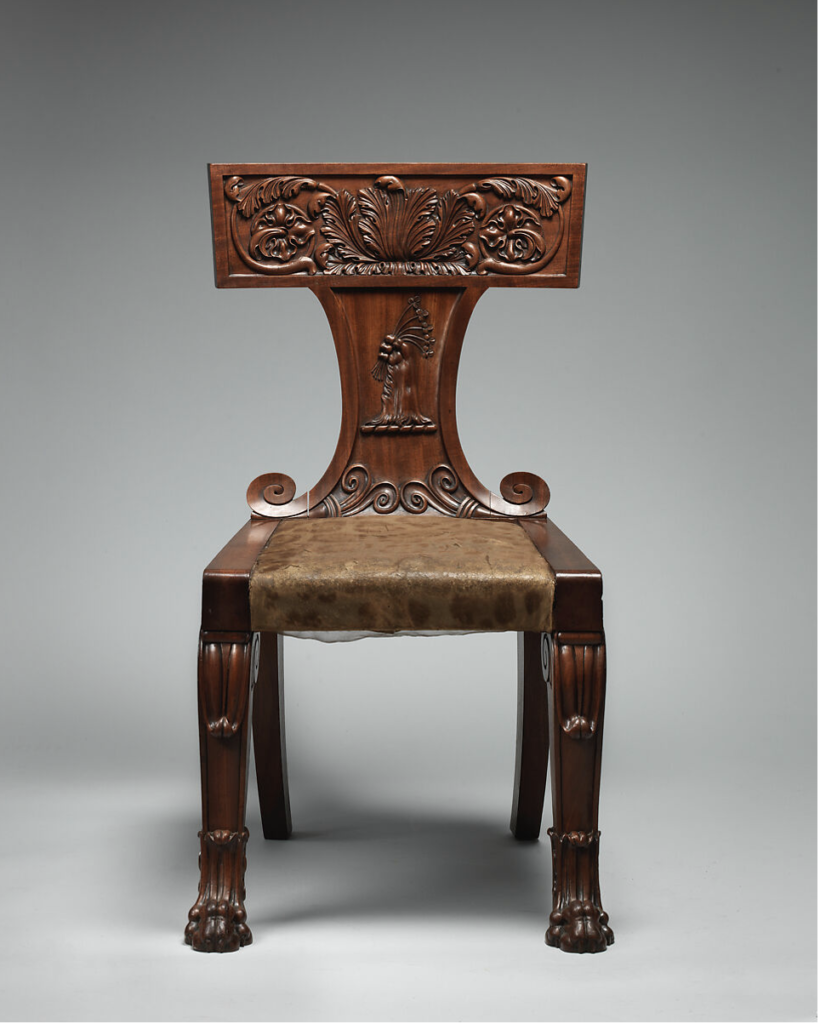
One from the set of chairs in the Met Museum
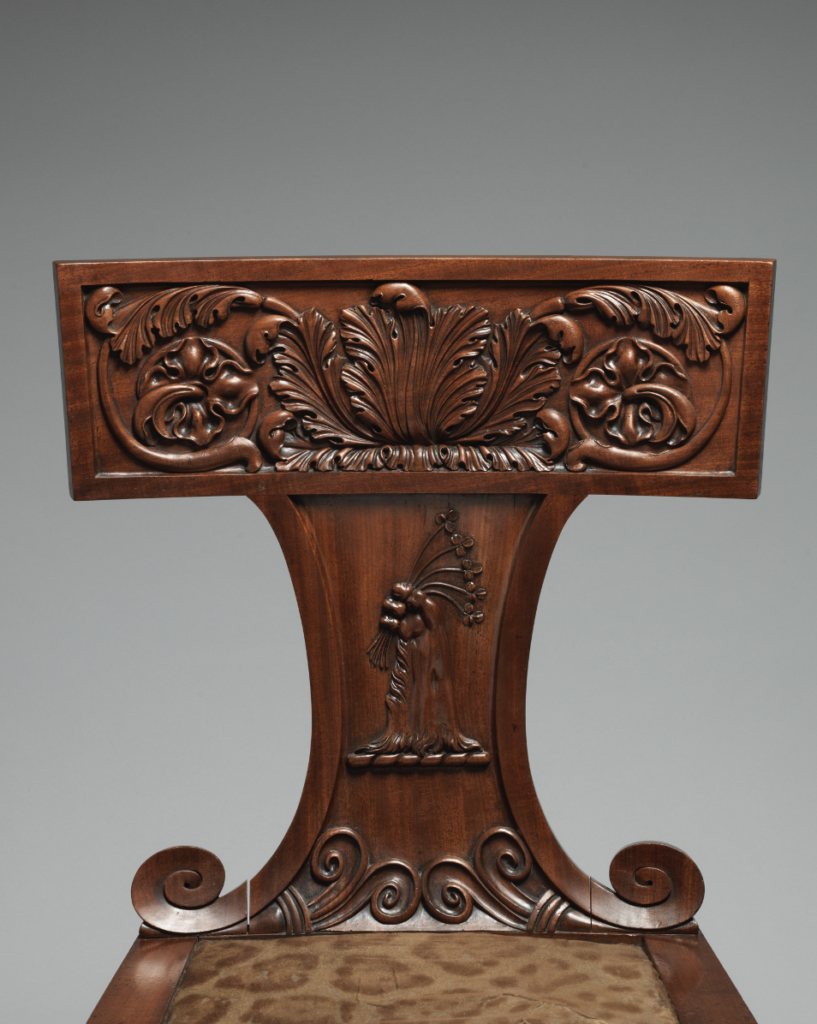 A close-up of the carving on one of the chairs from the set in the Metropolitan Museum
A close-up of the carving on one of the chairs from the set in the Metropolitan Museum
One of the armchairs in the Met is illustrated in Edward T. Joy’s English Furniture 1800-1851 p.58 These chairs were sold to the Met by the great regency design dealer Temple Williams of London in the late 1960s. There is also an armchair from this set in the V&A (accession number W.3-1967).
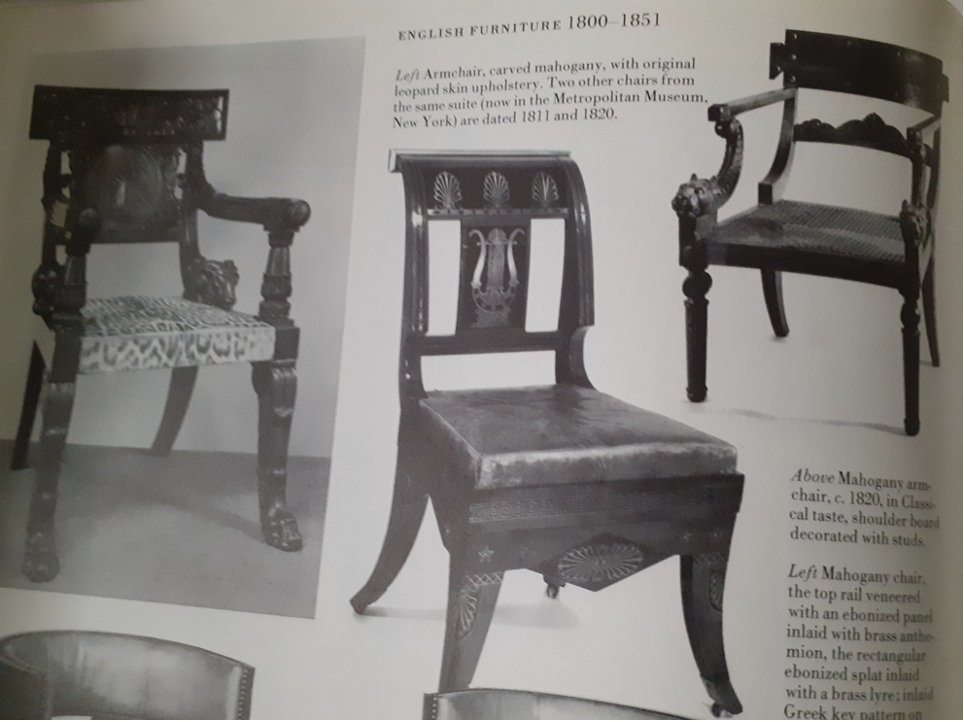
Edward T. Joy’s English Furniture 1800-1851 p.58. The Met chair shown top left
Crucially, one of the hall chairs is signed C. Dixwell and dated 1820.
Until we began researching our chair, C. Dixwell had always been assumed to have been a cabinet maker. Records show him being apprenticed to the important firm of Seddon in 1776 for a period of 7 years (see records in the Guildhall Library, MS 8052/7, f. 153). Dixwell then seems to have disappeared from view and the Met had assumed that he had set up as an independent cabinetmaker or “upholder” by the time their chairs were made.
We can now show that this was not the case-Charles Dixwell was in fact “a faithful and respected clerk” who had worked for Seddon for 67 years at the time of his death, aged 80, in 1841.
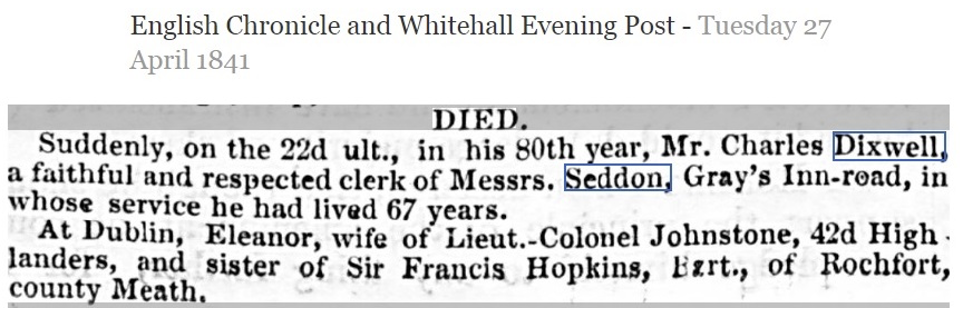
This proves that the Met chairs must have been executed by the firm of T. and G. Seddon-probably the largest and most important workshop in London at this point. Presumably Dixwell’s signature and the date on the rail of one of the chairs was added in some sort of administrative capacity-helping to record the progress of the commission in some way. We have shared this information with the Met and with BIFMO, the British and Irish Furniture Makers database, so as the confusion relating to Dixwell can be cleared up.
The chairs in the Met were made for the Pegge-Burnell family of Winkburn Hall and it is possible that our armchair might also have formed part of this commission.
From 1815 onwards the firm of Seddon-already one of the great London workshops in the late 18th century-was run by the nephews of the original founder. Sadly few details are known regarding specific commissions in the early part of the 19th century. From 1827, however, the firm took Nicholas Morel in to partnership and the newly formed Morel and Seddon worked almost exclusively for King George IV and William IV until c.1832. The firm undertook a vast amount of work for the Royal palaces, resulting in a bill of over £200,000-quite unheard of at the time. Other important 19th century commissions included a large amount of work for the Marquess of Stafford at Stafford House in London, Stoneleigh Abbey, Gorhambury, and work for James Morrison at 57 Harley Street and later at Basildon Park.
The BIFMO entry on Seddon specifically mentions the size of the operation and the fact that the firm had its own team of in-house “experienced draftsmen”. Some of these designers were very important and famous artists in their own right such as J.-J. Boileau and F.-H.-G. Jacob Desmalter In 1826, Seddon endorsed P and M. A. Nicholson’s publication the Practical Cabinet Maker and some of the designs for Greek ornament in the publication are very similar in feeling to that employed on our chair. It is tempting to think that the Seddon workshop may well have had a role in designing much of the furniture and decoration illustrated therein.
We have been able to identify the likely source for the carving on the panel on our chairs and, again, the results are most interesting. The carving is an adapted version of a frieze on the foot of a classical vase illustrated by G. B. Piranesi in his seminal Vasi, candelabri, cippi which was first issued in 1778.

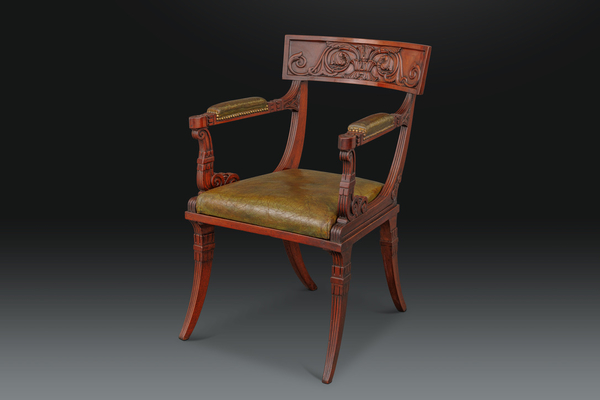







Reviews
There are no reviews yet.